And How! features open and innovative formats for notices, articles and posts.
This car was hard to identify. We did, but it took a bit of help from our friends. But instead of telling our readers what it is, why don’t we give away a free copy of the VeloceToday Select “Cuban Grand Prix, 1957” to the first one to email vack@cox.net and correctly identify the chassis, engine and coachbuilder?
Bob Temple photos courtesy Dale LaFollette at VintageMotorphoto
Before he went west when he was a young man (see Bob Temple at Palm Springs), Bob Temple journeyed to Watkins Glen to see the 1950 event, which was a very big deal. He took along his trusty camera loaded with Kodachrome film, and came back with negatives left in a box until Dale LaFollette found and purchased them after Bob’s death in 1991. The Temple photos have never been published before.
As usual, we asked our resident experts what they could add to the photos: Eric Davison, who was there watching eagerly, while he himself was taking precious color photos; Jim Sitz from the West Coast but who knows everyone, and Philippe Defechereux, who wrote the book “Watkins Glen, the Street Years • 1948-1952” and who kicks this off.
Defechereux: “Watkins Glen can fairly be called the birthplace of organized road racing in America, the sweet date being Saturday October 2, 1948. The following year was a building year for the new sport, with a second event added to the calendar: the first official race at Bridgehampton (Long Island, NY) on June 11, 1949. That event drew praise and 15,000 spectators, also featuring the first Ferrari ever to race this side of the Atlantic: Briggs Cunningham’s V-12-powered 166 SC. Watkins Glen in September ran its second event which proved an even bigger success, thanks in part to new entrants driving a gaggle of new racing cars from Europe besides BSC’s Ferrari. There were H.R.G.s, Allard K1s, and Cisitalias among others.
“It is the year 1950, however, that truly witnessed the “Big Bang” for road racing here. Palm Beach Shores, Florida, opened the season as early as January 3, with the Jaguar Factory even entering an official XK-120. Despite less-than clement weather, 19,000 spectators were counted. Next California joined the fray in the summer with two races that matched the formula, now well-established by Cameron Argetsinger. They took place in Palm Springs in April and Santa Ana in June. That month also witnessed Bridgehampton’s successful second run on June 10. Then a trio of enthusiastic Chicagoans, Jim Kimberly, Fred Wacker and Dave Garroway, using a private Cessna to make a broad aerial survey, determined that Elkhart Lake, WI, would allow for a great Midwest replica of Watkins Glen. Locals then organized the first big road racing event in in the Midwest on July 23. Again, tapping on obviously growing love affair with road racing, the new venue and its race proved an instant hit.
“So when Bob Temple arrived at the Glen in the third week of September, 1950, his timing was perfect, and he would have the privilege to witness three races instead of two as before: the Seneca Cup, the Queen Catherine Cup, and the Grand Prix. Good thing he had plenty of color film rolls for us to relish today.”
Sitz: A Mercer in the Watkins Glen car park. Interest in ‘old cars’ was growing and the Glen even had their old car Concours d’Elegance. When the SCCA was formed in 1944, their purpose was to preserve this type of car from being scrapped. There were no plans for racing since it was assumed ARCA would resume their racing after the War.
Sitz: Alfa 2500 Pinin Farina Convertible. This could be one owned by Alec Ulmann who did arrive at a Suffolk County NY race in May 1950 with an Alfa convertible. Hoffman Motors did not import that many and Ulmann would certainly have been at the Glen.
Defechereux: Tom Cole in his Cad Allard led the 1950 Grand Prix event on the first lap. On the second lap, Cole was exiting Townsend Road Corner ‘with a tad too much speed’, ended up in a ditch where our intrepid Bob Temple was standing.
Sitz: Oddly the year before in 1949, Cole debuted the J2 model in US, with a Cadillac engine. But the American press ignored the car!
No one could figure out who owned or built these sports car specials. Hopefully our readers can help.
Sitz: There is our mystery car again with the Farago special. Road & Track reported the car In April 1950, called Farago a ”sports car specialist “who built it after trip to his native Italy in 1948. He later raced at Sebring in SIATA.
Defechereux: Paul Farago was a Fiat enthusiast from Detroit, an early SCCA member of the local chapter along with Charles Davison (Eric’s father), and an excellent mechanic and body designer. His attractive Fiat Special first showed at the Glen in 1949, was built on Fiat 508 components, including the original 1,089cc engine. Paul Farago especially designed the sweeping roadster body for it, using light aluminum panels, which he shaped himself. The beautiful one-of-a-kind car won the Class 2 prize Concours d’Élégance in 1949, while it raced in the Queen Catherine’s Cup and won his class. Not bad for a one-man show.
Defechereux: The Fitch model B. The special had a Ford V8 60 and John Fitch took it to 8th overall in the Grand Prix event. The chassis and suspension were essentially Fiat 508 components and the engine was said to produce 105 hp at 5300 rpm. It became known as the “Fitch Bitch”.
Davison: Dave Garroway’s Jaguar SS100. During the weekend of the racing the town was a wild assortment of cars, drivers and spectators. One night I found myself outside a restaurant when Dave Garroway exited. Being a cheeky kid I stepped right up and introduced myself explaining that my Dad’s was the other SS100 that had been entered. I explained that the Jag broke down along the way. Garroway, a really fine gentleman and serious enthusiast told me to bring Dad around so they could talk. He also expressed dismay at the fate of our car and stated that it was too bad we could not have brought it the rest of the way. He had parts, tools and a willing crew and the car could have been on the track. I have been a fan of his ever since.
Sitz: Garroway acquired the SS 100 in January 1949, arrived with bang at the Lake Geneva Rally in May that year. By May 1950 the first Today show host had fitted a supercharger for the Bridgehampton race, then by May 1951 it was running an XK 120 motor.
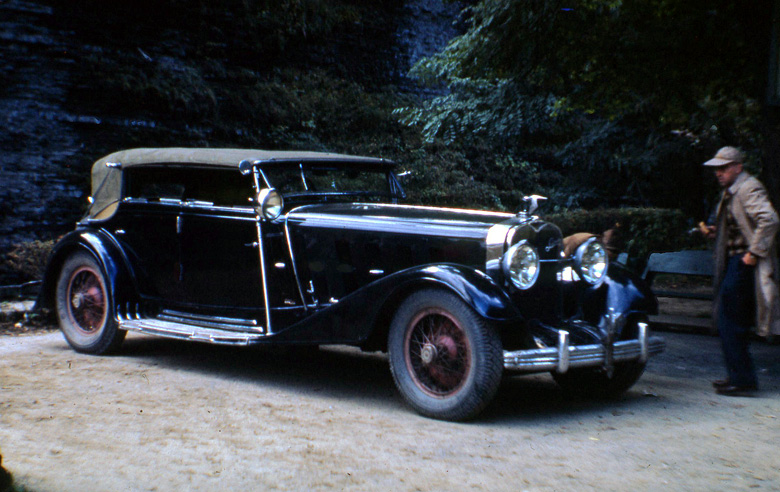
A Hispano Suiza sits majestically among the crowds but we know nothing else.
Sitz: Jim Kimberly in the 166 MM Ferrari leads Jim Pauley in the Nardi-Danese and Briggs Cunningham in the Healey Silverstone. Wait, not sure it is Cunningham’s Healey Silverstone, usually done in blue. Could be John Bentley’s.
Sitz: If you tried really hard could you design something worse? Grumman aircraft staffers were responsible for this I guess. Briggs was allowed to run standard Cadillac chassis for Le Mans with a special body, finished 11th behind his stock 62 Cadillac de Ville.
Defechereux: Cunningham’s “tank-like” Cadillac was used as a pace car in the Seneca Cup race by Cameron Argetsinger. It was way too big to actually race through the streets of Watkins Glen. However, it came to the Glen surrounded by a degree of fame and a nickname given to it by the French media: “Le Monstre.” Officially fielded at the Le Mans 24 Hour race earlier on June 24-25 by Briggs Cunningham, the huge rebodied Cadillac Model 61-51, now called a “roadster,” was entered along with is normally-bodied sister car, a regular Cadillac 61-50 Coupe. Given that more than half the field dropped out for various reasons before the finish, it is remarkable the BSC’s first attempt at Le Mans with American cars and drivers saw both entries finish honorably: the Coupe in 10th place, and “Le Monstre” right behind in 11th place. This rare color photo is precious.
Sitz: Mercedses 540 K was perhaps owned by Dr. Sam Scher, the famous NY plastic surgeon. He had the most wonderful cars!
Defechereux: Scher also brought the Bugatti Type 54 for Bill Milliken to drive.
Davison: The Bugatti that Milliken drove was fitted with a Buick Dynaflo transmission supplied by Charles Chayne who was, at the time, chief engineer at Buick.
Davison: Probably Max Hoffman’s Porsche.
Sitz: I had to wonder if this was 1950 or perhaps later since they were so rare. I checked my notes and found that Hoffman brought in just 3 cars in fall 1950, so this could be the Hoffman Porsche.
Sitz: Ralph Knudsen was from Milwaukee and later raced Brook Stevens’ Excalibur. The Veritas was originally owned by Dennis Poore of England. He would retire after 12 laps.
Defechereux: Karl Kling was expected to drive a factory entered Veritas but SCCA rules convinced the company it was not worth the trouble.
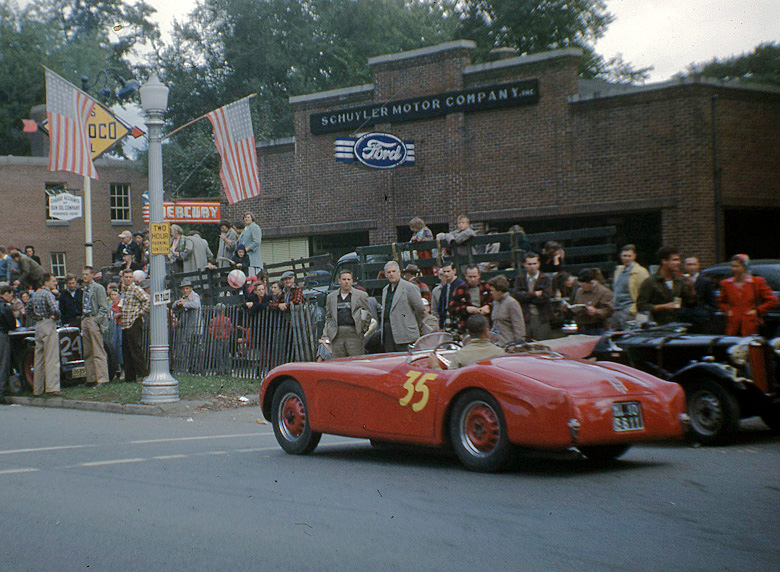
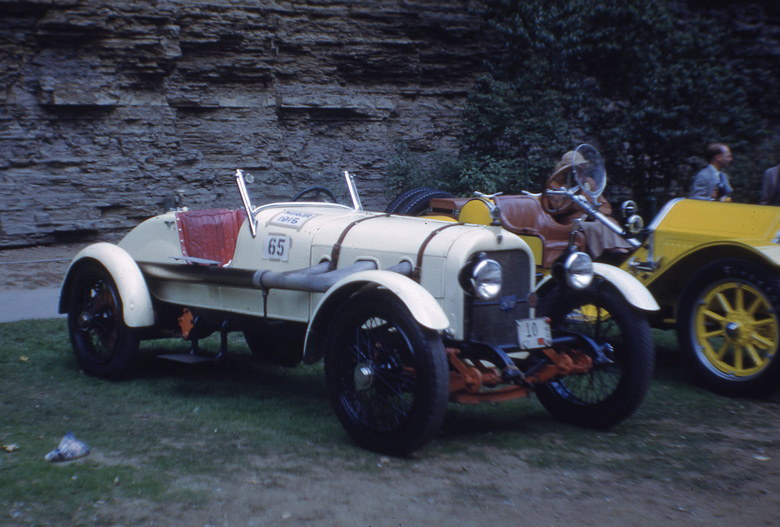
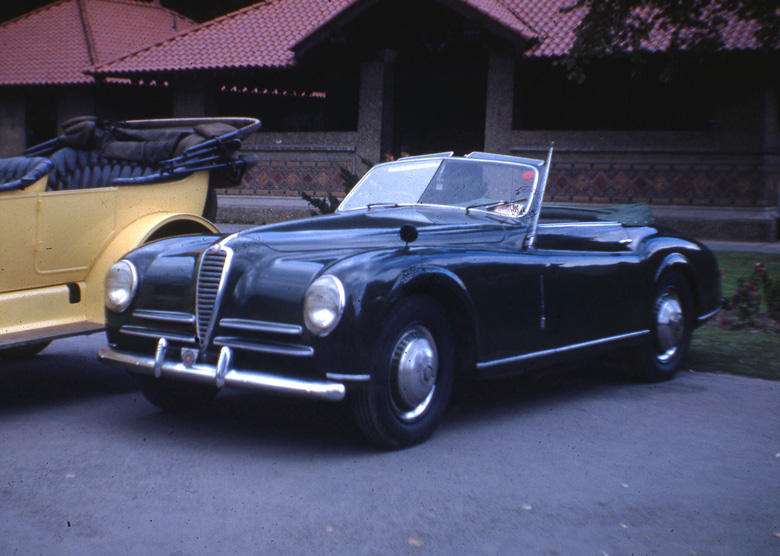
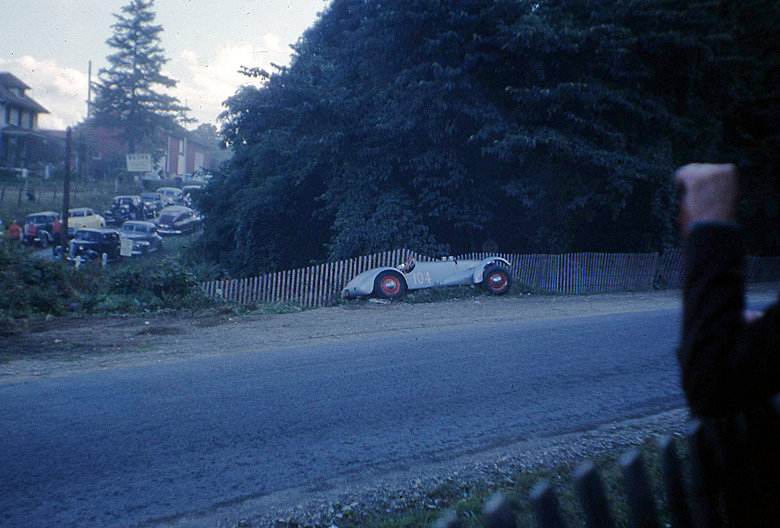
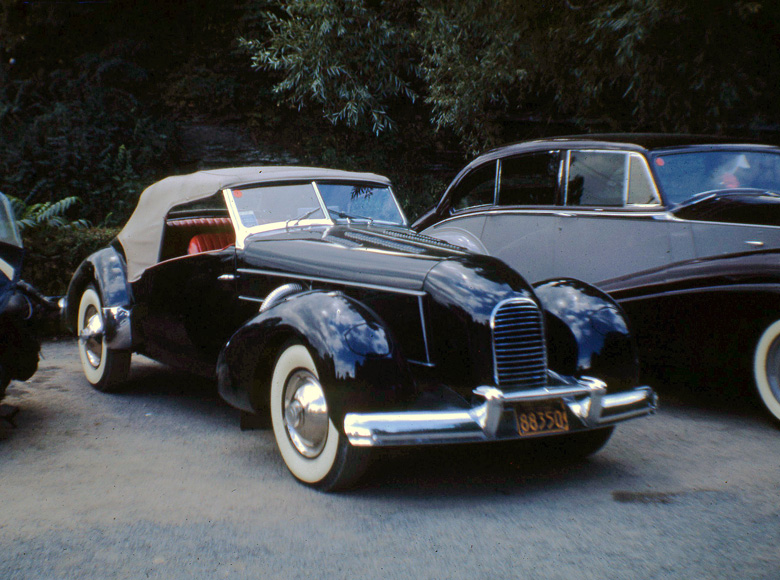
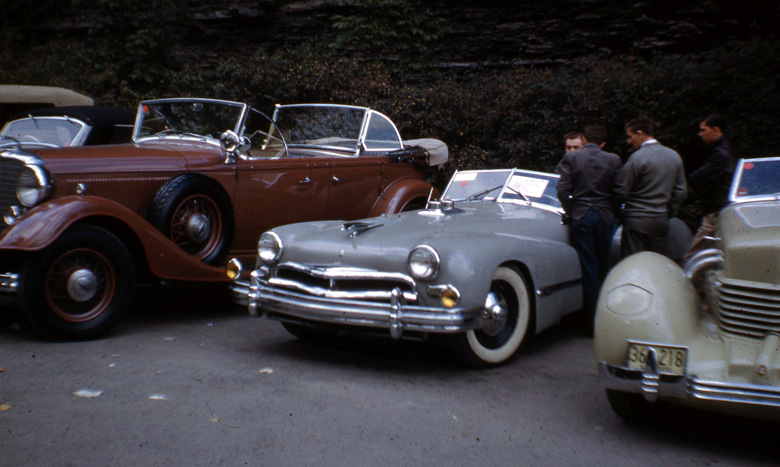
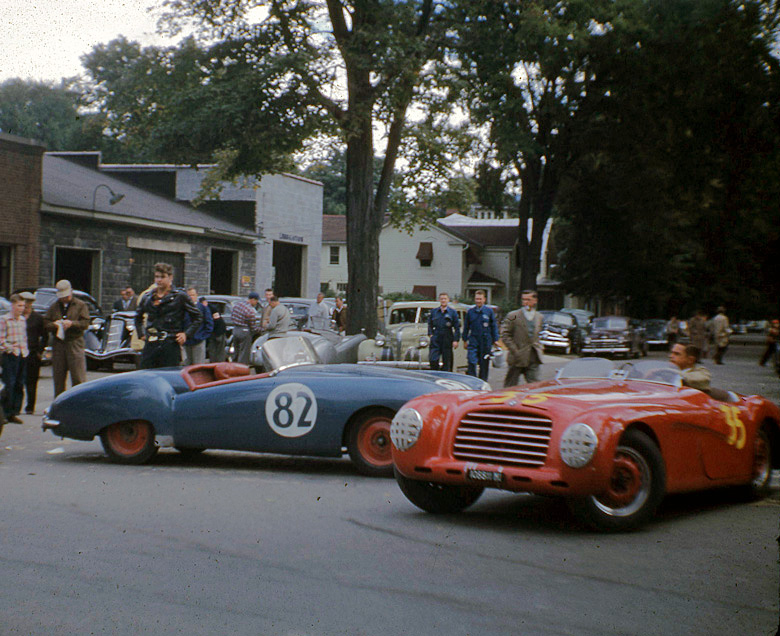
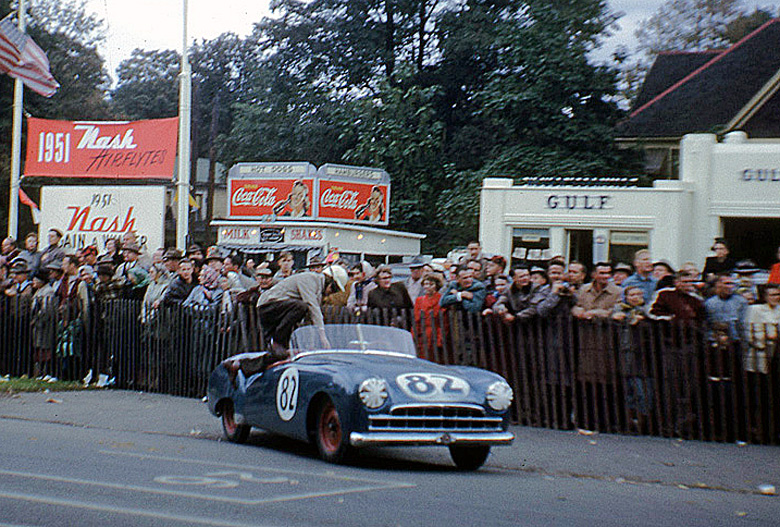
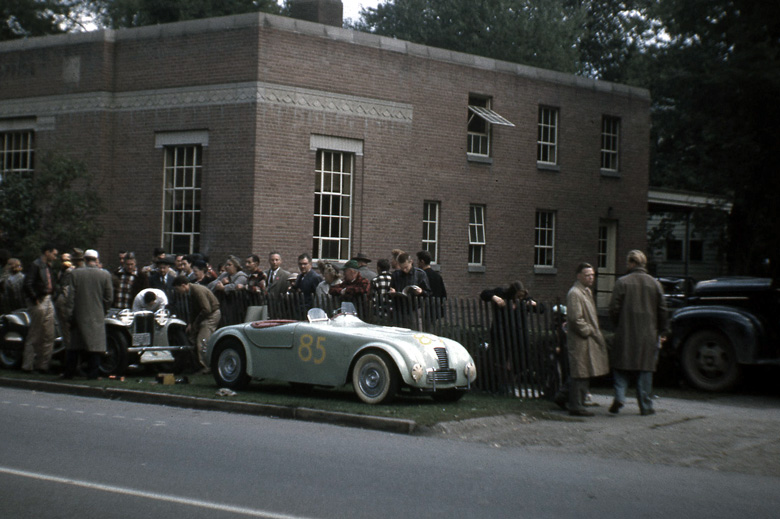
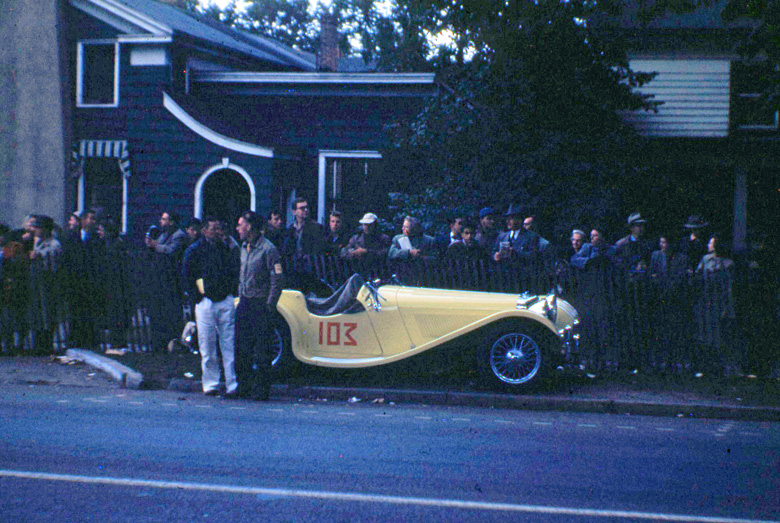
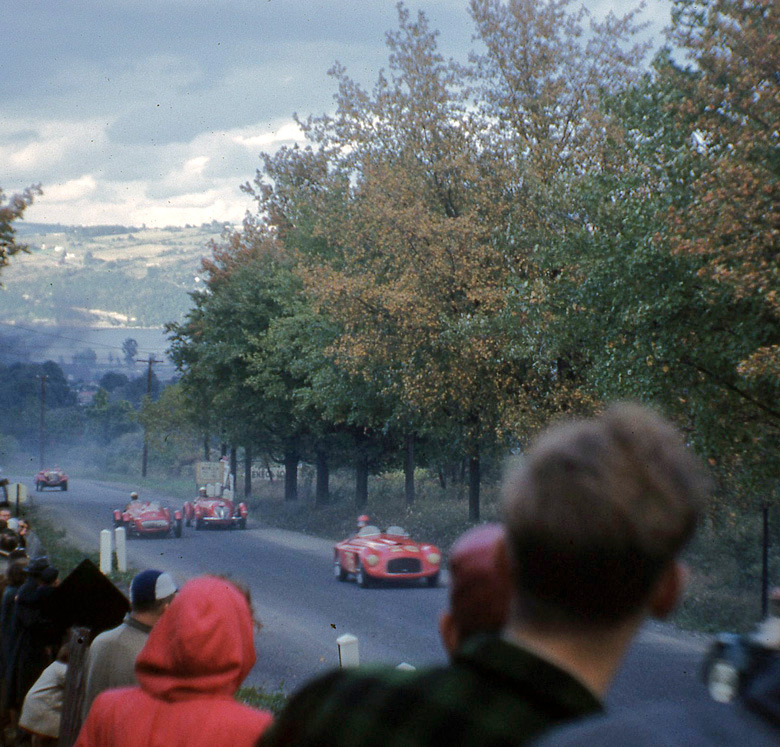
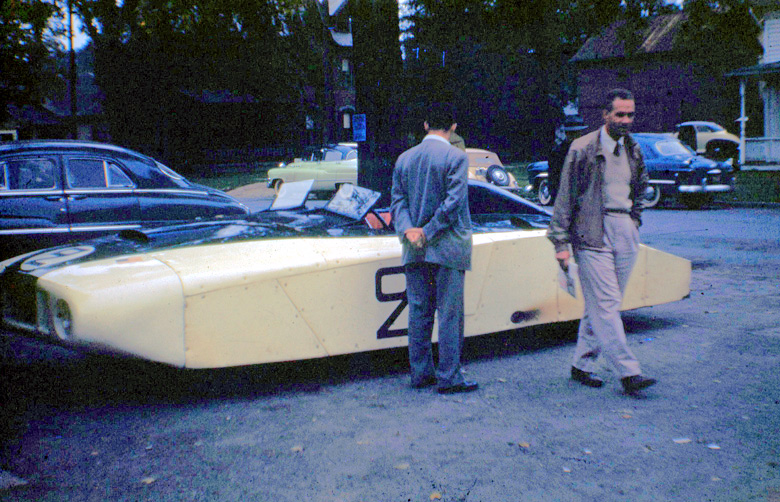
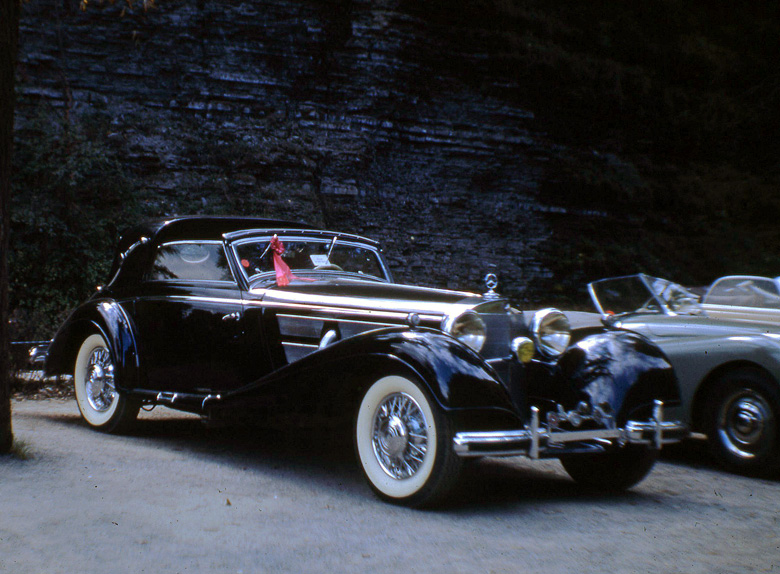

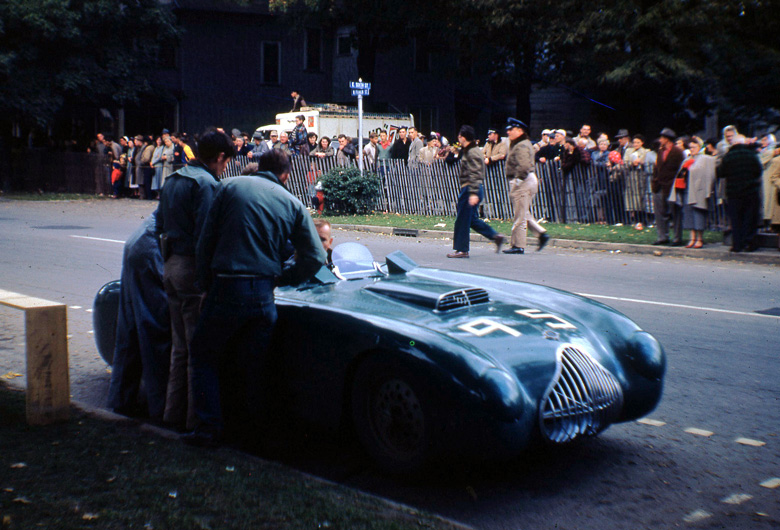
I will review the dates from an email I have from Charlie Strang. He drive up and down Manhattan with Ferry Porsche while up at Hoffmans. Strang and Carl Kiekhaefer ate dinner with the Porsches. Strang is about 96. He was the head of Mercury outboard engineering in those days and when Mercury was in NASCAR 1952-56. I got an email from him about a month ago. The white car 2 over from the red Porsche is likely my uncle’s XK 120. Hi name was Paul Timmins. One of Paul Timmins’ photos in my collection shows the Monstre being driven by Cameron Argetsinger in Watkins Glen. Cameron’s father is the passenger.
” How to build a Hot Rod “in March 1949, an article he wrote
later President of North East
Timing Association, Mr Paul Timmins of Boston. earl;y m,ember of
SCCA in 1948.
He raced an Ardun special at 1949 Watkins Glen, But by 1951 switched
to an Allard K.2 and a 500cc Effyh.!
After racing a productiuon Jaguar XK 120 in 1952, then purchased
the Jag special of Walt Hansgen.
(the two of them also shared a C type for Sebring)_
1954, Mr Timmins had the dubious distinction of ending
up in the Lake at the Thompson CT track…Think there is photo
of that in Road & Track for December issue.
Jim Sitz
Oregon
Pete and All, it’s great to see these color photos. A big thank you to VT!
For anyone interested in the 1950 season, Bill Milliken (my father) included first hand race reports in his autobiography, “Equations of Motion”. There is also a full chapter on the conversion of Scher’s T54 to the Dynaflow transmission. Available direct from the publishers, http://www.bentleypublishers.com/milliken
I am remembering this info about the Mercer #65 from the early 50s. If I am wrong, somebody please jump in with better info. I think that this car was found in a San Diego basement with the engine partially dismantled in the early 50s by a family friend. Charles Tignor, the friend, reassembled the engine and drove the car around town for a bit. His lady friend became in the family way and a procedure was decided upon. Being short of funds, the Mercer was sold to Richard Teaque (noted car body designer). Eventually the car wound up in the Harrah collection. Ownership history had followed the car and Charles was contacted and invited to visit the museum to see the restored car. Upon seeing the car Charles was disappointed to see that it had been returned to factory stock specification. He had been told by the previous owner that it had some competition history. In visiting with some knowledgeable Mercer historians in recent years, there has been some speculation that this car may have been a prototype from the Mercer factory from the period when Eric Delling joined the firm in engineering and brought in the “L” head 4 cyl. engine. Some have thought that it may even carry the original Deltal engine from the special that Delling built in 1913. I believe that there is a photo of Richard Teaque with this car in the library of the San Diego Automobile Museum.
I wonder John Timmins if Mr. Strang remembers when Carl Kiekhaefer put a Mercury Outboard 44 cu inch motor in my Bandini Siluro for the 1955 Sebring race?
Marvellous having those photos shared. The Pinin Farina convertible with that front style is fairly unusual, but I cannot add anything really useful.
The Nardi Danese pictured, according to an article by Homer Tsakis, who found and bought the car in 1969, was raced at Watkins Glen in 1950 by Perry Fina. Later he installed the Cadillac engine and Jim Pauley first raced it for him with that engine at Watkins Gen in 1951. It then went to Knute Kolmann, but I have now lost trace of it. Hopefully a reader will come to the rescue!
Hi, Jim and Eric,
If that Allard of Cole’s is the same one he won in later at Bridgehampton, the current owner entered it 2 years in a row (in the last 4 years) at the annual Bridgehampton Rally, held in October. And both times he drove it down from New Hampshire, where he lives.
Earl, that Allard belonged to Mr Perona who operated night club
in Manhatten, 1950 was silver J.2 for victory
then next year a light green J2X model
J2 was loaned in 1951 to John Fitch who drove it to big win
in Argentina match race between North and South America
Springboard for His career !
jim sitz
I was at Watkins Glen in 1950-51-52 & 53; also Bridgehampton in 1953 (I think). A LeMans Mercedes 300SL was raced there. Max Hoffman drove a Porsche Glockler but broke down or crashed. It got towed back to the pits on its brake drums! Dave Garroway’s SS100 overheated, as usual. If I remember correctly, Tom Cole’s J2X was Chrysler powered. Can’t remember who won any of the races but the atmosphere was electric. The cars parked around town were fantastic. Great memories!
Bridgehampton 1953, Maxie Hoffman merely did demo lap in the Mercedes that had run in Mexican Road Raced year before, I saw the car in Hollywood at the dealer International Motors just after Nov 52 Carrera
Glockler Porsche at Bridge on Long Island driven by John von Neumann
as a loaner car from Hoffman, He finished 3rd behind winning OSCA of
Phil Walters who was normally seen in Cunningham.
Both Johnny and Max from Vienna and of course von Neumann Porsche agent
in Los Angeles then.
faithfully
Jim sitz
A belated comment, but a point needs correcting. As significant an event as road racing at Watkins Glen was to postwar American racing, it was far from being the birthplace of such. Places such as New York, Savannah, Milwaukee, Santa Monica,
San Diego, Elgin and Corona all staged organized and sanctioned road races in or near their communities in 1915 and earlier. These events went by names such as Vanderbilt Cup and U.S. Grand Prize (Prix). The Vanderbilt Cup was run twice in New York in 1936/37 and it is still part of Indy Car racing. These events were truly international with many foreign cars and drivers. Let the record be complete.
Regards, R. J. Reed
John Timmins I would very much like to make contact re your uncle paul with reference to a couple of cars he raced
terry
Australia
tmcgrath@bigpond.com
.
A point well made!
Editor